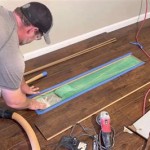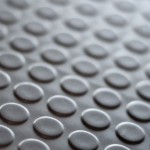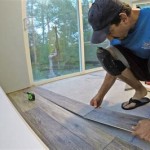Gluing Engineered Flooring to Subfloor: Essential Aspects
Engineered flooring, renowned for its durability and aesthetic appeal, requires a solid foundation to ensure its longevity. Gluing engineered flooring directly to the subfloor is a crucial step in the installation process that enhances both the stability and performance of the flooring. This guide will delve into the essential aspects of gluing engineered flooring to the subfloor, providing a comprehensive understanding of the materials, techniques, and best practices involved.
Choosing the Right Adhesive
The selection of the appropriate adhesive is paramount for a successful installation. The adhesive should be specifically designed for gluing engineered flooring and compatible with the type of subfloor involved. Water-based or solvent-based adhesives are commonly utilized, each offering distinct characteristics. Water-based adhesives provide a longer working time, allowing for adjustments during installation, while solvent-based adhesives offer quicker setting times and increased bond strength.
Surface Preparation
A properly prepared subfloor is essential for optimal adhesion. The subfloor should be clean, level, and free of any debris, moisture, or unevenness. Uneven subfloors may require leveling compounds to ensure a smooth and stable surface for the flooring. It is crucial to follow the manufacturer's instructions for subfloor preparation to achieve the best results.
Applying the Adhesive
The adhesive should be applied evenly and consistently using a notched trowel. The size of the trowel notches depends on the adhesive and flooring type, and should be specified by the manufacturer. The adhesive should be applied in a thin, uniform layer, ensuring complete coverage of the subfloor. Too little adhesive may result in poor bonding, while too much adhesive can create unevenness or interfere with the flooring's expansion and contraction.
Installing the Flooring
Engineered flooring planks should be carefully placed onto the adhesive-covered subfloor, ensuring proper alignment and spacing. The planks should be pressed firmly into the adhesive to create a strong bond. Stagger the joints between rows to enhance the overall strength and stability of the flooring. It is advisable to use spacers to maintain consistent spacing and ensure a professional finish.
Curing Time
After the engineered flooring is installed, it is crucial to allow ample time for the adhesive to cure and reach its full strength. The curing time varies depending on the adhesive used and the environmental conditions. It is essential to adhere to the manufacturer's recommended curing time to ensure the flooring is fully bonded to the subfloor and ready for use.
By following these essential aspects, you can effectively glue engineered flooring to the subfloor, resulting in a stable, durable, and aesthetically pleasing flooring solution. Remember to choose the appropriate adhesive, prepare the subfloor thoroughly, apply the adhesive evenly, install the flooring carefully, and allow sufficient curing time. With the right techniques and materials, you can achieve a professional-grade installation that will enhance the beauty and longevity of your engineered flooring.

Tricks From My Life Doing Glue Down Installs Wood Floor Business

Glue Wood Flooring To A Concrete Slab Fine Homebuilding

What To Consider When Gluing Hardwood Flooring Subfloor

Can You Glue Down Solid Wood Flooring Hardwood Guide Reallyfloors America S Est

What To Consider When Gluing Hardwood Flooring Subfloor

How To Install A Glue Down Floor Diy Flooring

How To Install An Engineered Hardwood Floor

Nail Or Glue Wood Flooring Installation And Beyond Blog

Installing Hardwood Floors On Concrete Subfloors

Installing Hardwood Flooring With Glue
Related Posts








